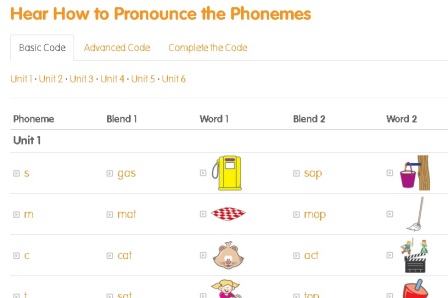Phoneme pronunciation
0 Replies
Pronouncing sounds crisply when helping beginners with literacy is very important, especially for blending.
For example, in the word “rat”, some adults say the sounds “r”, “a”, “tuh”, which blended together makes “ratter”.
To give a learner the best chance of blending this word successfully, the sounds need to be pronounced “r”, “a”, “t”, where the “t” is just a little puff of air made with the tongue behind the teeth, and has no voice and no vowel hanging off the end of it.
It’s hard to know if that made sense to you, as it’s hard to put sounds in a blog post. I was thinking of making a video about this when I discovered that the good folk at Get Reading Right have already set up a web page that is much better than anything I know how to do.
The page is called Phoneme Pronunciation, and first contains a little video where teacher Jo-Anne Dooner talks about the problem of vowels hanging from the ends of consonants, making them hard to blend correctly:
Next, if you scroll down the page, you’ll see this:
 If you click on the letters on the left, and your computer’s sound is on, you’ll hear nice, crisp sounds. Then you can click on the pictures and hear words containing that sound, or on the written words to hear a stretched-out version of the spoken word that makes it easier to “hear” the sounds.
If you click on the letters on the left, and your computer’s sound is on, you’ll hear nice, crisp sounds. Then you can click on the pictures and hear words containing that sound, or on the written words to hear a stretched-out version of the spoken word that makes it easier to “hear” the sounds.
The sequence on this page follows the Get Reading Right teaching sequence, starting with their version of the Basic Code, and then if you click on the “Advanced Code” and “Complete the code” tabs, you get more sounds and spellings, following their program’s teaching sequence.
 Even if you aren’t using the Get Reading Right teaching sequence or materials, this is really useful. Other videos on the internet tell you how to pronounce the sounds, but if you aren’t sure about just one or two sounds, you have to watch the whole video to find them.
Even if you aren’t using the Get Reading Right teaching sequence or materials, this is really useful. Other videos on the internet tell you how to pronounce the sounds, but if you aren’t sure about just one or two sounds, you have to watch the whole video to find them.
The Get Reading Right Phoneme Pronunciation page lets you go straight to the spelling/sound you want, without wading through lots of others.
“p’, “t”, “k” and “ch” in particular are very soft and quick sounds that lots of people distort trying to make them louder and more obvious. From now on when I hear people saying “puh” and “tuh” and “kuh” and “huh” and “chuh” I am going to try to helpfully and tactfully refer them to this useful page.
Once again, the page is called Phoneme Pronunciation from Get Reading Right. Save it to your Favourites now.



Leave a Reply